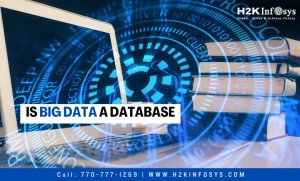Big data security concerns as the big data deployments will be valuable targets to intruders. Any single ransomware attack may leave the big data deployment subject to ransom demands. An unauthorized user will gain access to the big data to siphon off and sell valuable information. Security big data interfaces that take traditional security tools, newly developed toolsets, and intelligent processes for monitoring all through the security of life of the platform.
Big data security tasks are clear enough to keep out unauthorized users and also intrusions with the firewalls that are strong user authentication, end-user training, and intrusion protection systems and intrusion detection systems. The big data network strategy for the big data environments includes another level of security tools that may operate during the three data stages that are not present in the network data ingress, stored data, and data output.
Data sources-
Here the big data sources will come from various sources and data types. The user-generated data alone will be CRM or ERP data, transactional data, and large amounts of unstructured data like email messages.
Stored data-
Protecting the stored data that takes advanced toolsets by including encryption at rest, strong user authentication, and intrusion protection and planning. We also need to run the security toolsets across the distributed cluster platform with many servers and nodes.
Output data-
The whole reason for all the complexity and expense of the big data platform is being able to run meaningful analytics across the massive data volumes. This is a more valuable brilliance that will make a rich target for intrusion, and it will be critical to encrypt output results as ingress.
Big data security challenges:
Many challenges are there for securing the big data that compromises its security. We have to keep in mind that these challenges are by no means limited to big data platforms.
The challenges are
- Advanced analytic tools for unstructured big data and also non-relational databases which are newer technologies in the active department. It will be very difficult for security software and processes to protect these new toolsets.
- Advanced security tools are effectively used to protect the data ingress and also storage. They will be having the same impact on data output from many analytics tools to many locations.
- The big data administrators will decide to mine data without any permission. Whether the motivation is curiosity or criminal profit the security tools that need to monitor and alert on suspicious access no matter where it comes.
- The size of big data installation, terabytes to petabytes large is too big for routine security audits. The big data platforms will be clustered based on this and may introduce multiple vulnerabilities all over multiple nodes and servers.
- Big data owners don’t often update security for the environment that is at risk of data loss and also exposure.
Who is held responsible for big data security?
A big data deployment will cross many business units, IT, administrators, programmers, quality testers, infosec, compliance officers, and business units that are all responsible in some way for any big data deployment.
We have many benefits of using Big Data:
Big data allows companies to improve their products and also build tailored marketing structures by gaining a 360-degree view of their customer behaviors and motivations.
It also enables business or service providers to supervise fraudulent activities in real-time by identifying unusual patterns and behavior with the help of predictive analytics. It drives supply chain efficiencies by collecting and analyzing data to determine if products are reaching their destination in the desired conditions to attract customer interest. Predictive analysis allows businesses to scan and analyze social media feeds to understand the sentiment among the customers
Questions
- What is Big Data security?
- What are the challenges of Big Data security?




























